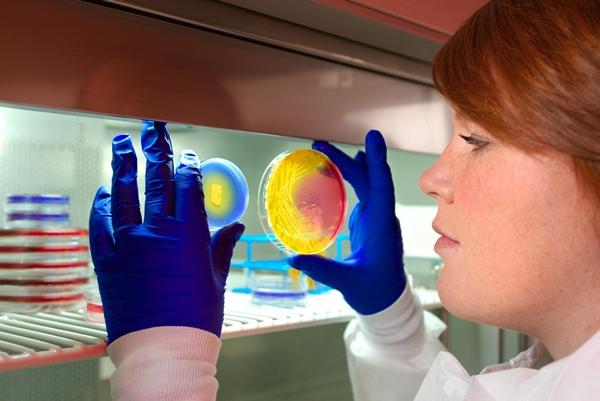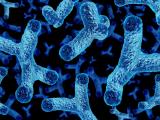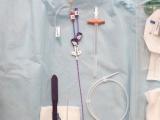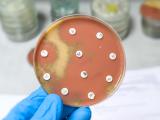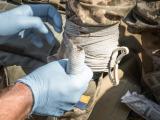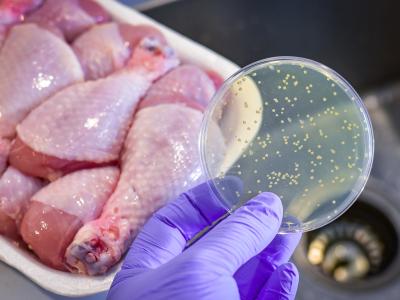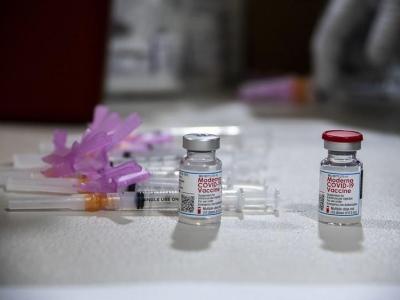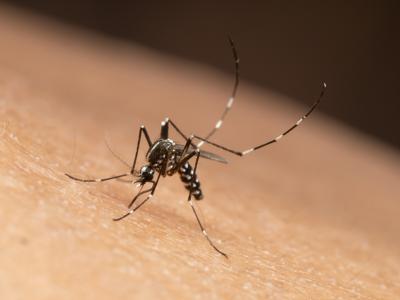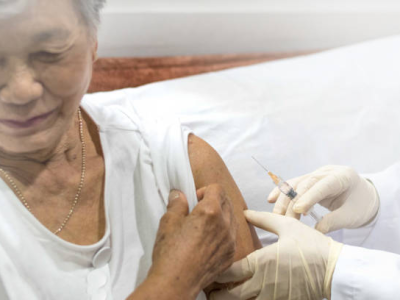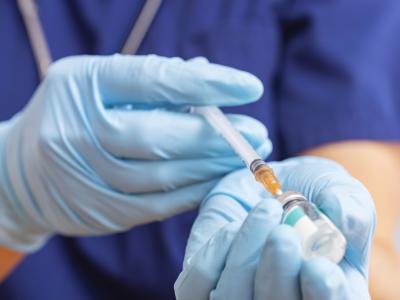Federal officials at a congressional hearing this week outlined a range of measures to combat antimicrobial resistance (AR), such as increased laboratory capacity, a national genome sequencing database, and an incubator program to help get new experimental drugs into clinical testing.
The battle to save antibiotics gained new urgency recently with the discovery of the MCR-1 resistance gene in human and swine bacteria in the United States, which prompted the Jun 14 hearing before the House Energy and Commerce Subcommittee on Oversight and Investigations.
"The detection of this new antibiotic-resistant gene is troubling because it signals the potential arrival of an unstoppable superbug. This gene is resistant to a last-resort antibiotic [colistin] and has the ability to move from one bacterium to another," Energy and Commerce Committee Chairman Fred Upton, R-Mich., said in a press release about the hearing.
Scientists reported just 3 weeks ago that the MCR-1 gene was found in Escherichia coli from a Pennsylvania woman who had a urinary tract infection and also in E coli from a pig.
The subcommittee heard from representatives of the Centers for Disease Control and Prevention (CDC), National Institute of Allergy and Infectious Diseases (NIAID), the Biomedical Advanced Research and Development Authority (BARDA), and the Food and Drug Administration (FDA).
Beth Bell, MD, MPH, director of the National Center for Emerging and Zoonotic Infectious Diseases at the CDC, said in her prepared statement that the Pennsylvania woman's infection did not involve carbapenem-resistant Enterobactericeae (CRE) and was not resistant to all antibiotics.
But she added, "The presence of the mcr-1 gene, however, and its ability to share its colistin resistance with other bacteria, such as CRE, raises the possibility that pan-resistant bacteria could develop."
She also commented that the woman's MCR-1 E coli isolate did not match the one found in the pig. A second MCR-1 pig isolate is now being analyzed, she added, but the CDC said earlier this week that it is not as resistant as the first pig isolate.
CDC boosting lab capacity
Discussing the CDC's efforts to reduce antibiotic resistance, Bell said Congress provided the agency with $160 million for fiscal year 2016 to implement the National Action Plan for Combating Antibiotic-Resistant Bacteria (CARB).
"Beginning this fall, CDC's Antibiotic Resistance Lab Network will provide infrastructure and lab capacity through as many as eight regional labs across the country." Bell said.
"These labs will be able to detect resistant organisms recovered from human samples and new forms of antibiotic resistance—including mutations that allow bacteria to withstand last-resort drugs like colistin—and report these findings to CDC as well as back to facilities and states."
She added that the CDC will provide support for labs in all states to test for CRE and support regional labs for additional testing in outbreak responses, such as screening patients for colonizing bacteria.
In other comments, Bell said the CDC is working with large healthcare systems to demonstrate best practices in antimicrobial stewardship programs and to measure outcomes of antibiotic use.
"Much of this work responds to the threat of sepsis, often a sign of severe infection that includes resistant infections," she said.
In committee questions, Murphy noted that the CDC launched a campaign against antibiotic overuse in 2000, and he asked Bell why the overprescribing has continued.
She replied that he was referring to the agency's "Get Smart" campaign, which focused on antibiotics for outpatients. "It actually has had quite a bit of impact," she said. "We've actually seen considerable improvement over the years."
Bell said the CDC has been "redoubling" its efforts on behalf of antimicrobial stewardship over the past 2 years. "We now know that about 40% hospitals in the US have all elements of an antibiotic stewardship program," she added.
BARDA: Broad-spectrum drugs in pipeline
Richard J. Hatchett, MD, acting director of BARDA, said in prepared testimony that there are nine products in the pipeline provided by the agency's Broad-Spectrum Antimicrobial program, launched in 2010 to support development of new classes of antibiotics. Five of the drugs have reached phase 3 trials, and two have completed the "registration clinical studies" necessary for FDA approval, he added.
One of the programs "is noteworthy in that it reflects a groundbreaking effort to coordinate funding with the European Union's Innovative Medicine Initiative and thereby speed the development of Astra Zeneca's lead antibiotic, astreonam/avibactam," he said.
"A few of the drugs in BARDA's portfolio have shown in vitro activity against bacteria harboring mcr-1 and if approved these products could provide some relief against resistance concerns in the future," Hatchett reported. He said all nine products have activity against gram-negative bacteria, for which new drugs are "desperately needed."
In another initiative, Hatchett said, BARDA is working with the NIAID on the "CARB Accelerator," which serves to provide an incubator for new products and "reinvigorate the early-stage antibiotic pipeline."
He noted that biomedical innovations often occur in small companies and academic labs that lack the resources and expertise to move products to clinical development. The CARB Accelerator aims to provide funding to move products from proof of concept through preclinical development.
"BARDA will provide direct funding to launch the Accelerator in 2016, with a goal to support the program thereafter for five years, while NIAID will provide access to an array of product development support services," Hatchett said. He didn't say how much money is involved.
A national genomic database
At the NIAID, relevant research efforts include support for a national genome sequence database of antibiotic-resistant bacteria as part of the CARB initiative, said Dennis M. Dixon, PhD, of the agency's Division of Microbiology and Infectious Diseases.
"This database, being developed by NIH [National Institutes of Health] in collaboration with FDA and CDC, will provide a comprehensive resource for surveillance, epidemiology, and basic research into the mechanisms of antibiotic resistance," he said in his prepared statement.
In the translational research realm, Dixon noted the need for rapid point-of-care diagnostic tests to limit the inappropriate use of broad-spectrum antimicrobials. He said the NIH and BARDA are funding a $20 million prize for rapid diagnostics.
Dixon cited various other NIAID initiatives to battle antimicrobial resistance. For some examples:
- The agency is developing a study to test procalcitonin, a biomarker that could help clinicians distinguish between bacterial and viral lower respiratory tract infections.
- Many novel therapies are being explored, including monoclonal antibodies, bacteriophages (viruses that infect bacteria), and strategies targeting the microbiome or the host immune system.
- Agency scientists recently discovered teixobactin, a drug that has a novel mechanism of action and has shown promise against several resistant microbes.
Candidate drugs get FDA priority review
Janet Woodcock, MD, head of the FDA's Center for Drug Evaluation and Research, said the GAIN (Generating Antibiotic Incentives Now) Act, passed in 2012, is helping to stimulate the development of new antimicrobials. The law allows the FDA to designate certain antimicrobials as "Qualified Infectious Disease Products" (QIDPs), which allows for priority review and possible fast-track status. The designation also provides sponsors with an extra 5 years of market exclusivity.
"To date, FDA has granted 107 QIDP designations for 63 different unique molecules," Woodcock said.
She said the FDA has approved five new antibacterial drugs and one new antifungal since the GAIN Act's passage. Three of the five antibacterials are for acute skin and skin-structure infections caused by methicillin-resistant Staphylococcus aureus and certain other pathogens; the other two are for complicated urinary tract and intra-abdominal infections.
In other comments, Woodcock said that with the aim of promoting development of new antimicrobials, the FDA is considering establishing a clinical trial network "that can operationalize common clinical trial protocols at a level of quality that matches the pharmaceutical industry and that can respond to future needs in an agile fashion."
She said BARDA is gathering information to evaluate the costs and practical considerations posed by such a network.
See also:
House subcommittee hearing landing page with links to witness statements
Jun 14 House Energy and Commerce Committee press release
May 26 CIDRAP News story "Highly resistant MCR-1 'superbug' found in US for first time"
Jun 14 CIDRAP News item "CDC reports another detection of MCR-1 resistance gene in pig sample"
